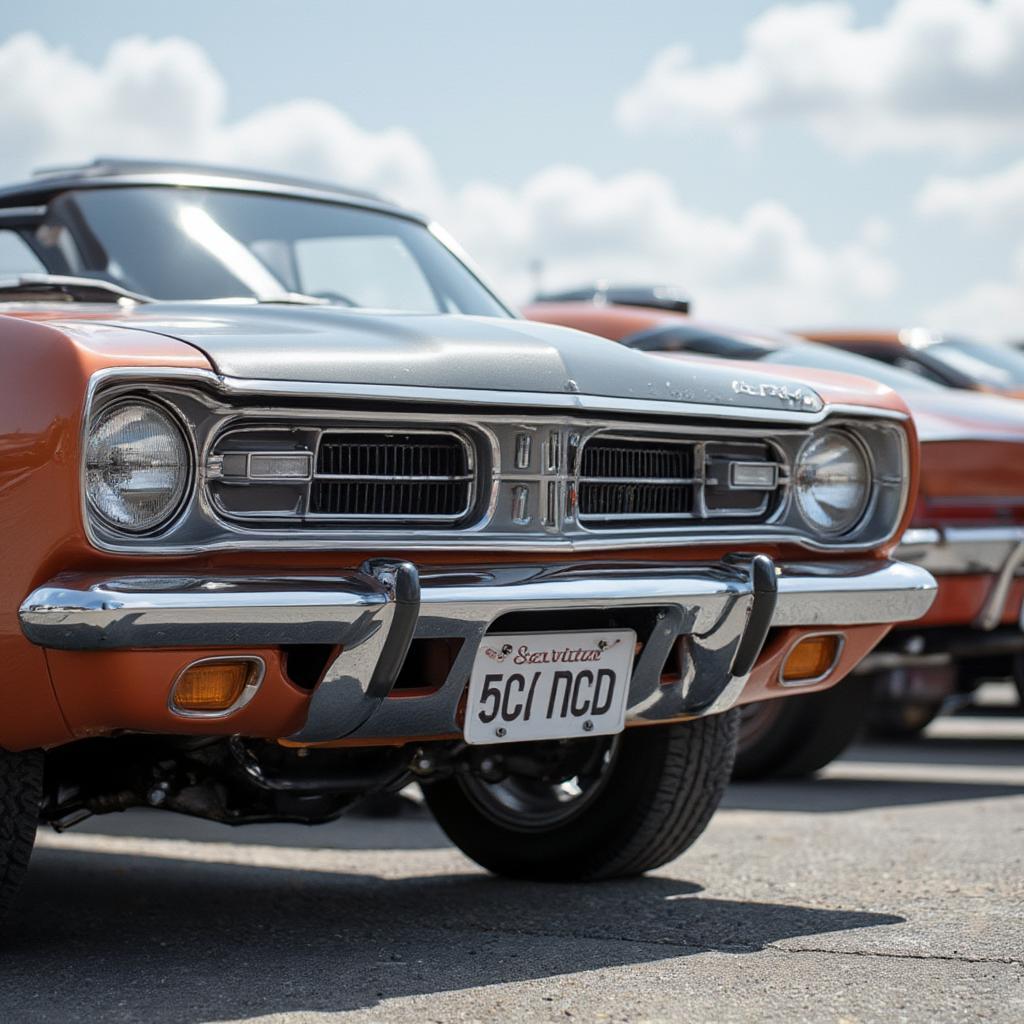Chrysler Muscle: A Legacy of American Power and Performance

Chrysler Muscle cars have a rich and storied history, leaving an indelible mark on American automotive culture. From the roaring engines of the classic era to the modern muscle resurgence, Chrysler’s contributions to the segment are undeniable. This article delves deep into the world of Chrysler muscle, exploring its iconic models, innovative engineering, and enduring legacy. early muscle cars
The Golden Age of Chrysler Muscle
The 1960s and early 1970s marked the golden age of muscle cars, and Chrysler was at the forefront of this horsepower revolution. The Chrysler 300 “letter series” laid the groundwork, showcasing powerful V8 engines and luxurious appointments. Then came the legendary Plymouth and Dodge brands, unleashing a torrent of iconic models that defined the era.
Plymouth’s Prowess: The Fury, Road Runner, and GTX
Plymouth, with its focus on performance and affordability, quickly became a dominant force in the muscle car scene. The Plymouth Fury, in its various high-performance iterations, offered thrilling acceleration and aggressive styling. The Plymouth Road Runner, known for its cartoon mascot and “beep beep” horn, provided tire-smoking fun at a budget-friendly price. At the top of Plymouth’s performance hierarchy sat the GTX, a luxurious and potent muscle car that combined brute force with refined comfort.

Dodge’s Domination: The Charger, Challenger, and Super Bee
Dodge, Chrysler’s performance-oriented division, answered Plymouth’s challenge with its own formidable lineup. The Dodge Charger, with its iconic fastback roofline and potent engine options, quickly became a cultural icon, further cemented by its appearances in movies and television shows. The Dodge Challenger, a direct competitor to the Mustang and Camaro, offered a blend of style, performance, and affordability. For budget-conscious enthusiasts, the Dodge Super Bee provided stripped-down performance, emphasizing raw power over creature comforts. What made these models so successful was their ability to resonate with the everyday American craving power and performance.
Chrysler’s Engineering Innovations
Chrysler’s success in the muscle car arena wasn’t just about raw power; it was also about engineering innovation. The company pioneered the use of big-block V8 engines, like the legendary 426 Hemi, which delivered unmatched performance. Chrysler also developed advanced suspension systems and braking technologies to ensure that its muscle cars could handle their immense power. They truly understood the need for balanced performance, not just straight-line speed. “Chrysler’s engineers were obsessed with pushing the boundaries of performance,” says automotive historian Robert Johnson. “They weren’t content with just building fast cars; they wanted to build cars that were also incredibly capable.”
The Rise of the 426 Hemi: A Legend is Born
The 426 Hemi engine, often referred to as the “Elephant Engine” due to its size and power, remains one of the most iconic and sought-after engines in automotive history. Its hemispherical combustion chambers allowed for greater airflow and more efficient fuel burning, resulting in incredible horsepower and torque. The Hemi powered some of the most legendary Chrysler muscle cars, including the Plymouth Barracuda and Dodge Charger Daytona. “The Hemi wasn’t just an engine; it was a statement,” adds Johnson. “It represented the pinnacle of American muscle car performance.”
The Modern Muscle Car Era: Chrysler’s Resurgence
While the original muscle car era faded in the early 1970s, Chrysler has played a significant role in the modern muscle car resurgence. The reintroduction of the Dodge Charger and Challenger, with their retro-inspired styling and powerful engines, has reignited the passion for American muscle. These modern iterations offer a blend of classic design cues with modern technology and performance. Furthermore, the introduction of Hellcat models, boasting supercharged V8 engines with over 700 horsepower, has cemented Chrysler’s position as a leader in the modern muscle car market.
What Makes a Chrysler Muscle Car Unique?
Chrysler muscle cars are known for their blend of brute force and distinctive styling. They often feature bold lines, aggressive grilles, and powerful engines that rumble with authority. Beyond the sheet metal, Chrysler muscle cars possess a unique character, a raw and unapologetic expression of American automotive passion. “There’s a visceral feeling you get when you drive a Chrysler muscle car,” explains automotive journalist Sarah Chen. “It’s a connection to a bygone era, a time when performance was king.”
Conclusion
Chrysler’s contribution to the muscle car world is undeniable. From the classic era to the modern resurgence, Chrysler muscle cars have captured the hearts and minds of enthusiasts with their potent performance, innovative engineering, and iconic designs. The legacy of Chrysler muscle continues to thrive, ensuring that future generations can experience the thrill and excitement of American automotive power. Whether you are drawn to the classic lines of a vintage Charger or the raw power of a modern Hellcat, Chrysler muscle offers something for every enthusiast.

FAQ: Chrysler Muscle Cars
- What was the most powerful Chrysler muscle car ever made?
- What is a Hemi engine, and why is it so special?
- Which Chrysler muscle car is the most collectible?
- What is the difference between a Plymouth Road Runner and a GTX?
- What made the Dodge Charger so iconic?
- Are modern Chrysler muscle cars as good as the classics?
- Where can I find information about restoring a classic Chrysler muscle car?
- What are some common modifications for Chrysler muscle cars?
- What is the future of Chrysler muscle cars in the electric vehicle era?




